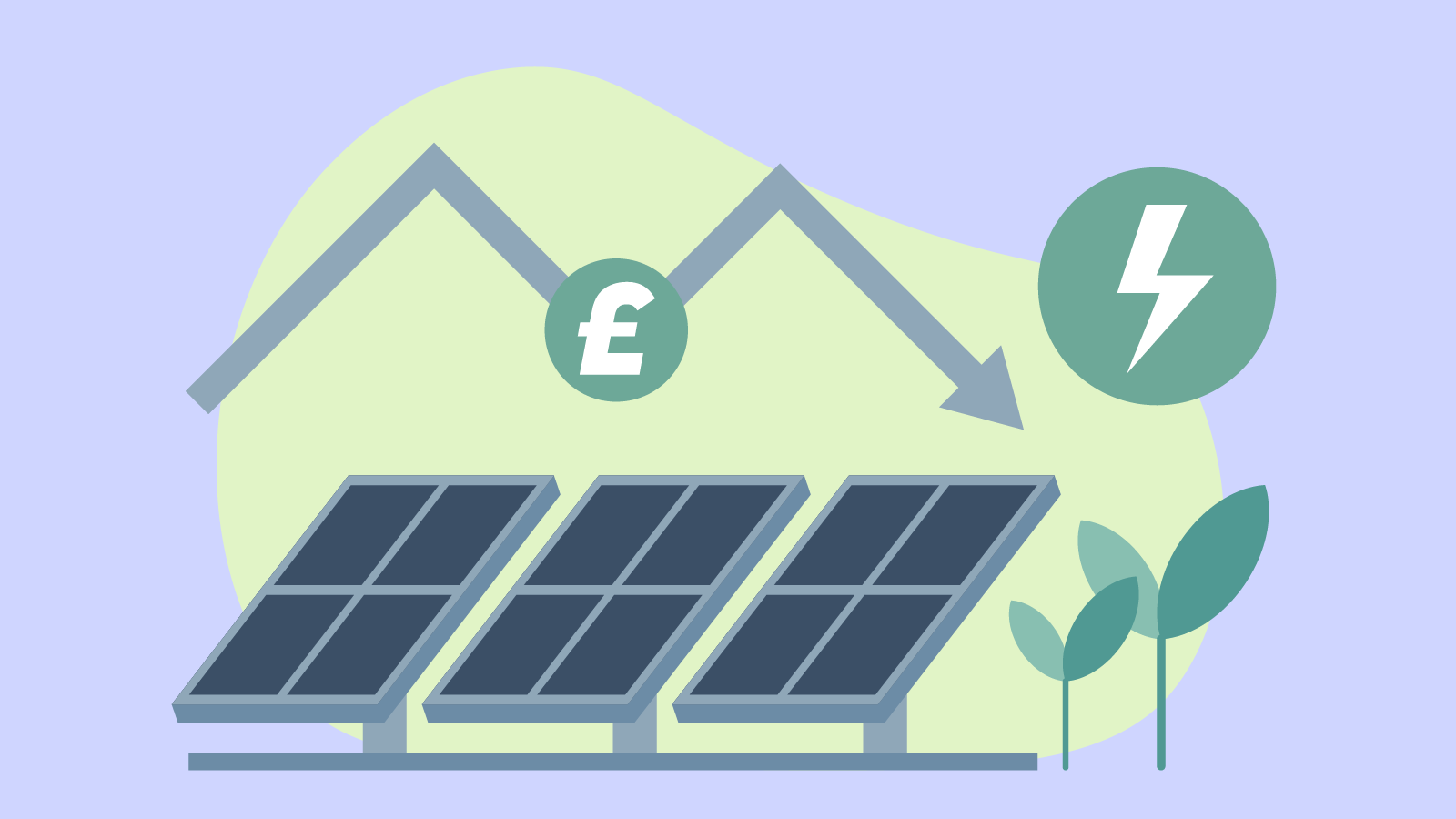Improve energy efficiency and save your business money

With soaring energy costs and increasing environmental concerns, it’s more important than ever to do everything we can to cut energy usage and reduce our monthly bills.
Fortunately, it’s easier - and cheaper - than you’d think to save money and improve your energy efficiency.
According to recent reports, a small business in the UK can expect, on average, to spend around £500 per month on electricity and just over £170 per month on gas. This amounts to roughly £8,000 a year spent solely on energy.
As you might expect, the numbers are significantly higher for medium and large businesses, with an average annual energy bill of around £21,000 at the top end.
Of course, each business’s energy costs are unique, and can vary dramatically depending on the size of the business and the sector that it operates within. Commercial enterprises consume the most energy by far in the UK, at almost 170 million MWh annually, while iron, steel and metal manufacturing consumes the least, at 17.4 million MWh.
Currently, no. The most recent government initiative - the Energy Bill Discount Scheme (EBDS) - which was intended to help businesses combat rising energy prices, ended in March 2024.
As of writing, there are no plans in place to introduce a replacement scheme, making it more crucial than ever that businesses do what they can to reduce energy costs themselves.

Here are our top ten tips on reducing your business’s energy costs and consumption, many of which are low-cost or even free.
First things first, it’s a good idea to assess your current energy usage to find out where there is room for improvement.
An energy audit will examine your business’s energy consumption in depth, highlight problem areas and suggest actions that you can take to reduce your usage. They are relatively quick - usually only taking a matter of hours, depending on the size of your building - and are even offered as a free service by some energy suppliers, as part of their business offering. It’s worth checking if you’re eligible with your current supplier.
If your business doesn’t already have one, it might also be a good idea to obtain a commercial Energy Performance Certificate (EPC). This document details the energy efficiency of a building, rated from A (most efficient) to G (least efficient), and will also suggest actions to improve efficiency.
This is an important thing to consider as, generally, the more energy-efficient your building is, the cheaper it is to run.
Switching to a different energy supplier is relatively hassle-free and could only take a matter of weeks, making this a quick and easy option for reducing energy expenditure.
It’s worth doing your research before switching. Suppliers offer many different tariffs and some even offer additional perks and services, like free energy management software. Take a little time to look at what’s available, and choose the package that’s right for your business.
Energy-efficient devices may cost more upfront but can lead to dramatic savings in the long run. You don’t have to make drastic changes to see an impact, either.
Lighting your premises could account for up to 40% of your business’s energy expenditure, so switching out old incandescent light bulbs for modern, energy-efficient LED, CFL or halogen bulbs could net you some major savings with relatively little outlay.
In terms of keeping your employees comfortable, heat pumps are significantly more energy-efficient than traditional boilers. While they are certainly expensive, the government is offering grants of up to £7,500 off the cost of a heat pump to properties across England and Wales, and the potential savings on your annual heating bill could make it worthwhile for your business.
It is also worth looking at the other equipment that your business uses, and finding out if any of it can be swapped out for more energy-efficient models. The Energy Technology List provides a catalogue of over 8,000 government-approved energy-efficient products, including everything from heating, lighting and building insulation to machinery for specific sectors.
Climate control can also account for a big chunk of your energy expenditure. Obviously you need to keep your employees and customers comfortable on your premises, but heating and cooling is an area where significant improvements can be made.
If you don’t already have one, installing an adjustable or programmable thermostat is one of the easiest ways to manage your energy expenditure on heating and cooling. A programmable thermostat will automatically adjust the temperature of your workplace based on rules that you set, meaning you could ensure heating/cooling is only used when needed, and is turned off when the office is empty.
Even if you already have a programmable thermostat, it might be worth reviewing the settings. Lowering the average temperature of your workplace by as little as 1°C could reduce your annual heating bill by almost 10%. As a general rule, setting your heating to 19°C and your air con to 24°C or higher should ensure a consistently comfortable temperature throughout the year.
Of course, managing your thermostat will only get you so far if your building is poorly insulated. Investing in cavity wall insulation or upgraded window glazing could be very expensive and time-consuming in the short term, but will net you big savings in the long run. And there are simpler - and cheaper - ways to help improve your building’s insulation, like re-sealing windows and doors.

Climate isn’t the only area of your business that might benefit from a more conscious reassessment. Changes in behaviour and thinking around energy usage in the workplace could lead to significant savings.
Turning off lights when not in use is a simple but effective way of reducing energy costs, and can be made even easier by investing in lighting timers and motion sensors. Think about when you actually need to use the lighting in your workplace, and take advantage of natural light as much as possible.
Other equipment should also be turned off when not being used. A single desktop computer left on standby will add around £10 to your energy costs every year, which can mount up considerably when multiplied across all the computers in your business.
The same conscientious thinking should be applied to all of the equipment in the office, including the appliances in the kitchen. It’s estimated that overfilling the kettle - which requires more energy to heat a greater volume of water - costs Britain an average of £68 million per year, so encouraging your employees to bear this in mind when taking a well-earned break could save you a surprising amount.
Even if your business already has the latest energy-efficient equipment, it’s always a good idea to perform regular maintenance checks. This will ensure that your equipment is functioning and up-to-date and will help to keep running costs down.
Regular maintenance is especially important for heating and cooling. Well-maintained boilers run significantly more efficiently and, in fact, many require a yearly service to remain under warranty.
It’s also good practice to replace air conditioner filters at least twice a year. Switching out clogged filters could lower your unit’s energy usage by as much as 15%.
Investing in alternative energy sources, such as solar panelling, can be very expensive, but in the long run could help to dramatically reduce your energy expenditure.
Taking advantage of renewable energy sources means your business doesn’t have to rely solely on existing energy infrastructures, and the constantly-rising prices associated with them. And, as an added benefit, any unused energy that you generate can be sold back to the grid.
What’s more, investing in renewable energy sources will position your business ahead of any future legislation on emissions, meaning spending the money to upgrade your infrastructure now could end up saving you even more in the long run.
While there are currently no government initiatives to help businesses with their energy costs - the recent Energy Bill Discount Scheme ended in March 2024 - your business may be eligible for tax relief .
UK businesses could be eligible for relief or even exempt from some taxes if they meet certain criteria, including small businesses that don’t use much energy or, on the other end of the spectrum, businesses that consume a lot of energy during everyday operation. If your business is making a concerted effort to embrace energy-efficient technology, you may also be eligible for tax relief - this is known as the Climate Change Levy.
The world has changed dramatically in the past few years, and now more businesses than ever are taking advantage of flexible and remote working. While working from home offers many benefits to employees, it also has the added bonus of creating a more energy-efficient workplace.
Put simply, fewer members of staff working in the office means less equipment being turned on and less lighting and heating being required, which in turn means less money spent on energy.
Of course, home working is not suitable for all businesses, so your mileage on this one may vary, but it’s worth thinking about if it’s not already part of your everyday working.
A 2013 Carbon Trust study found that UK businesses could save more than £300 million per year on their energy bills if they educated their employees on the benefits and practices of energy efficiency, and that figure has only grown since then.
At the end of the day, reducing your business energy bills is a team effort and requires every employee from across the company to pitch in. Encourage your coworkers to follow the simple energy efficiency techniques already discussed in this guide - turning off computers at the end of the day, not overfilling the kettle, etc. - and regularly share progress and new ideas to keep everyone engaged.